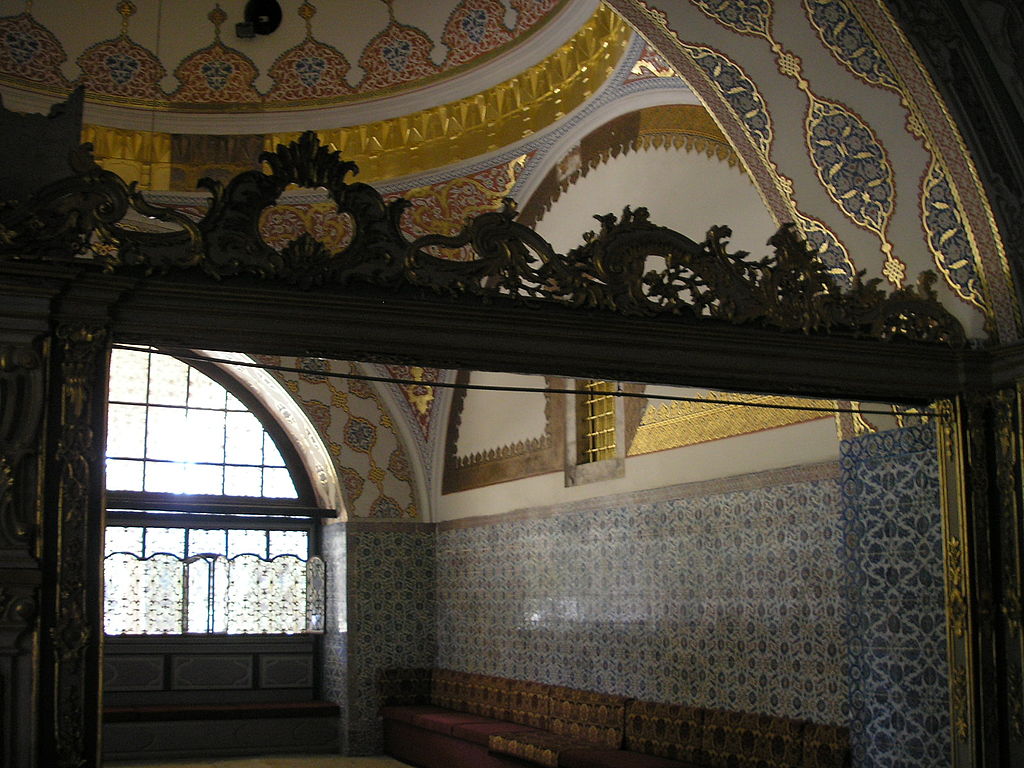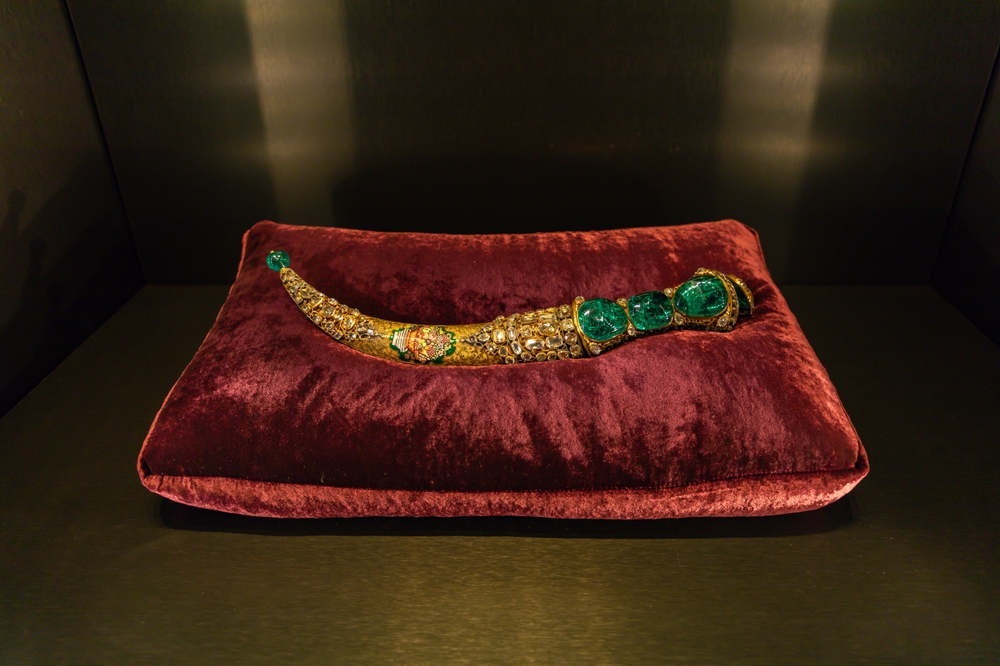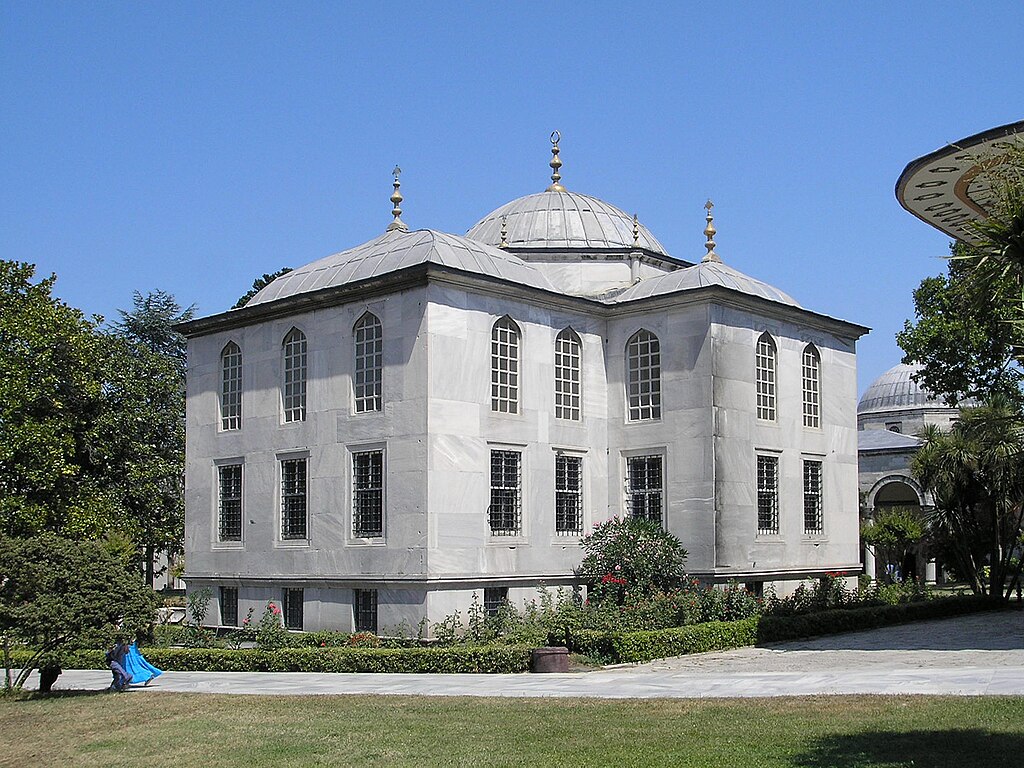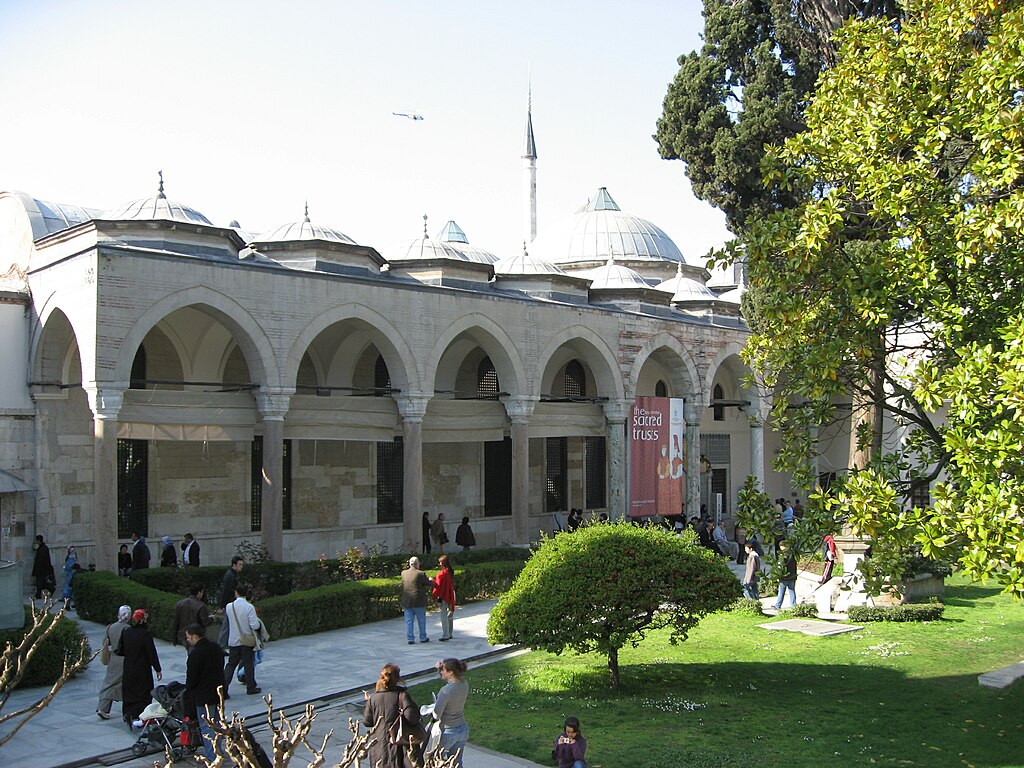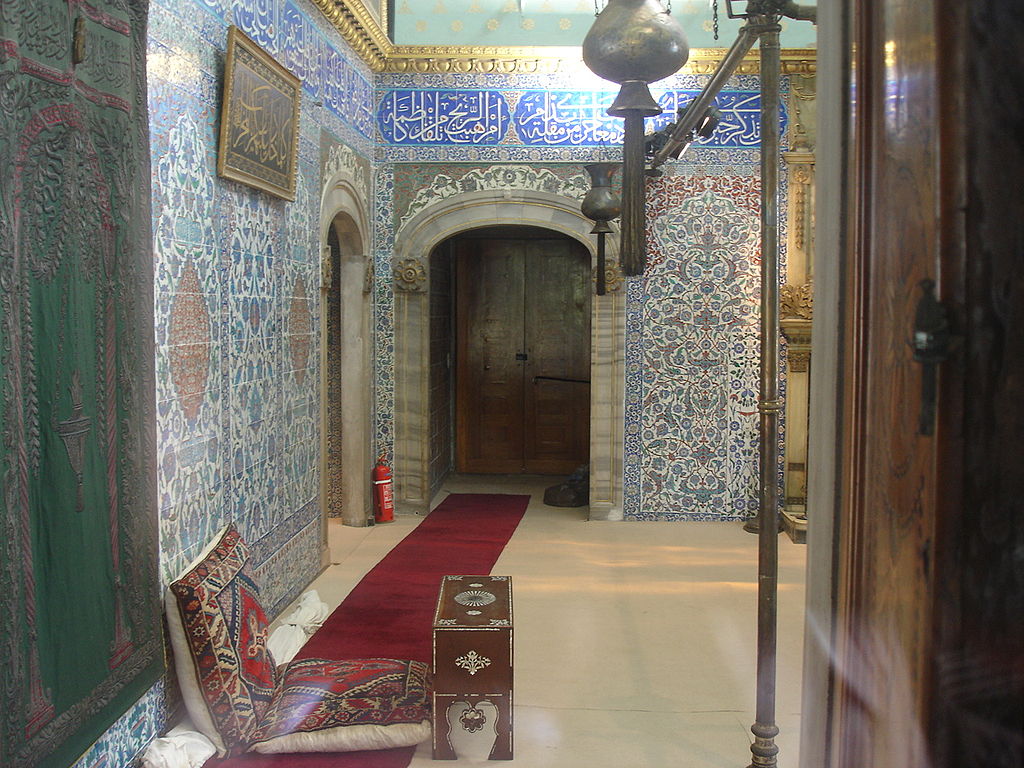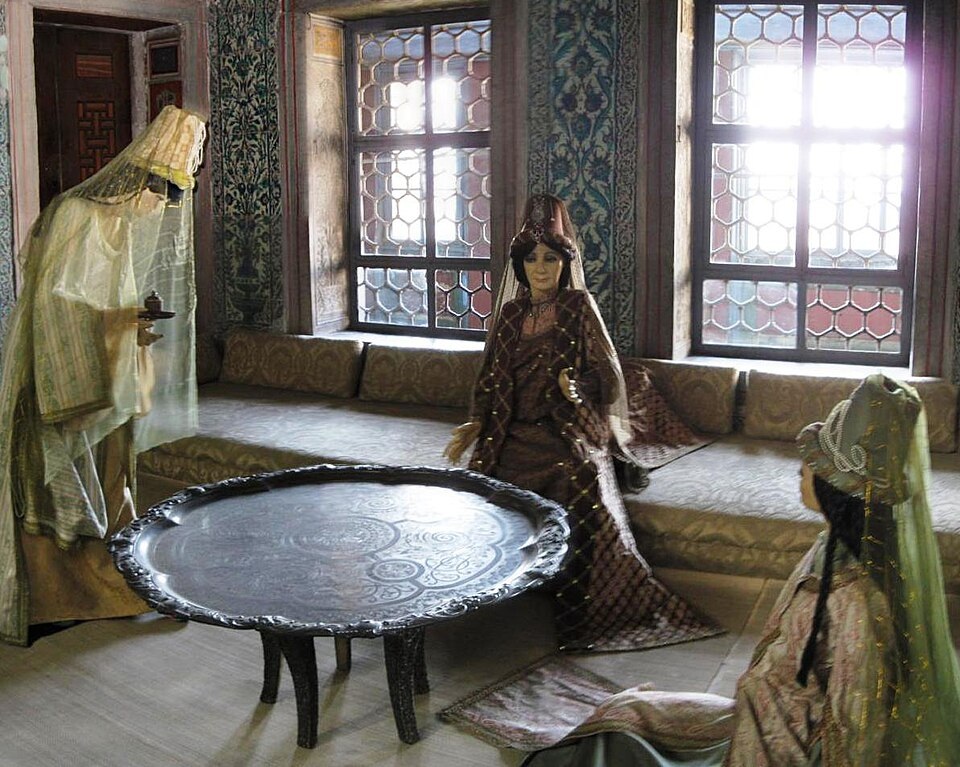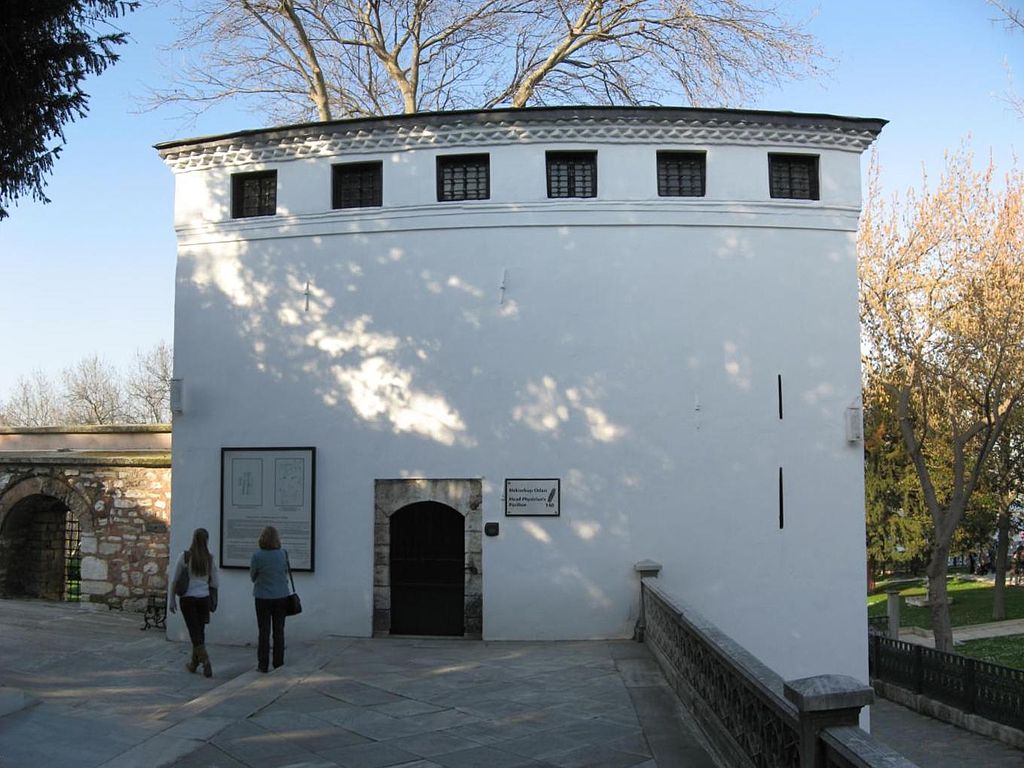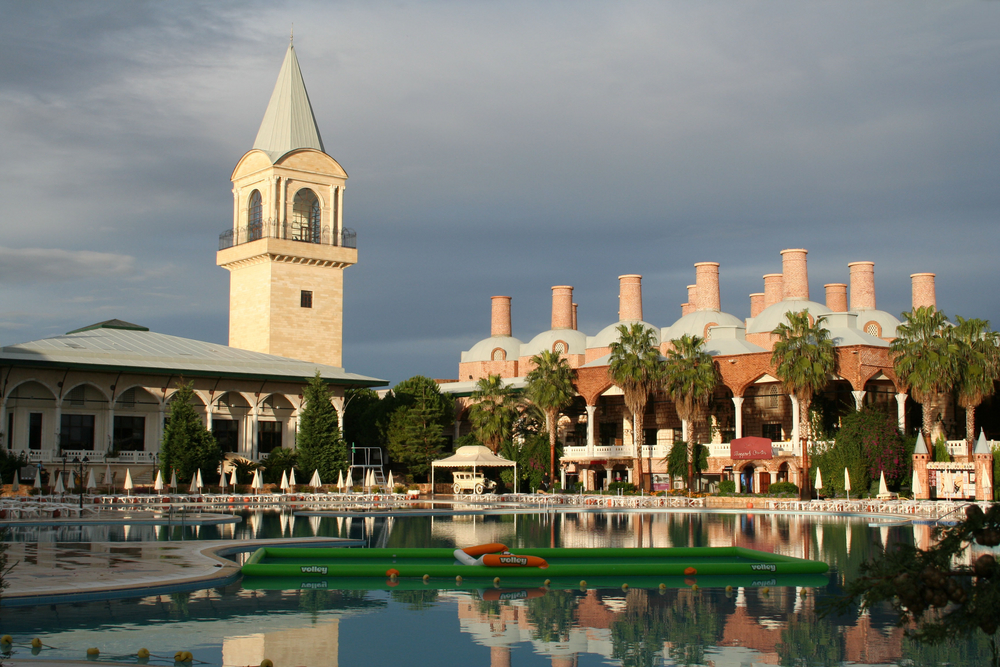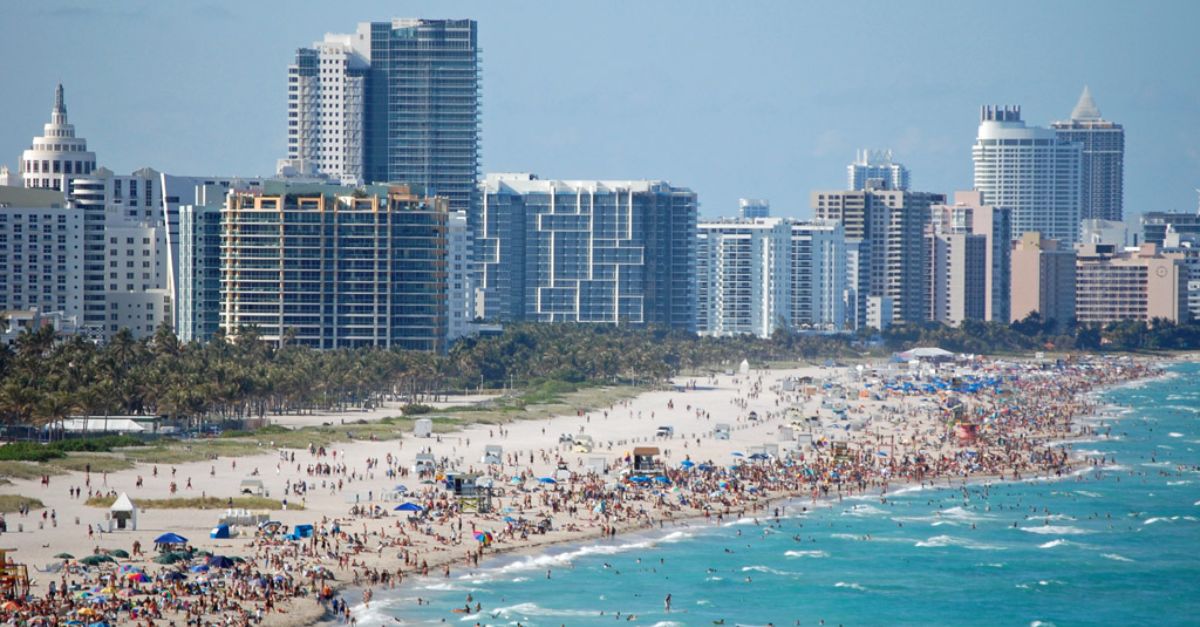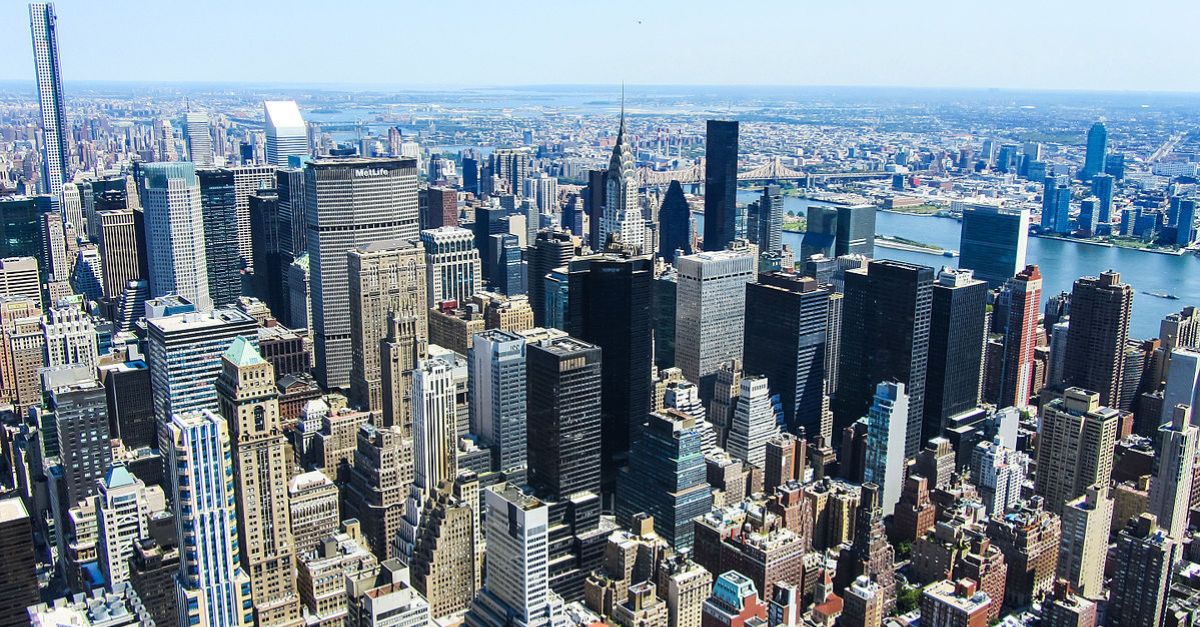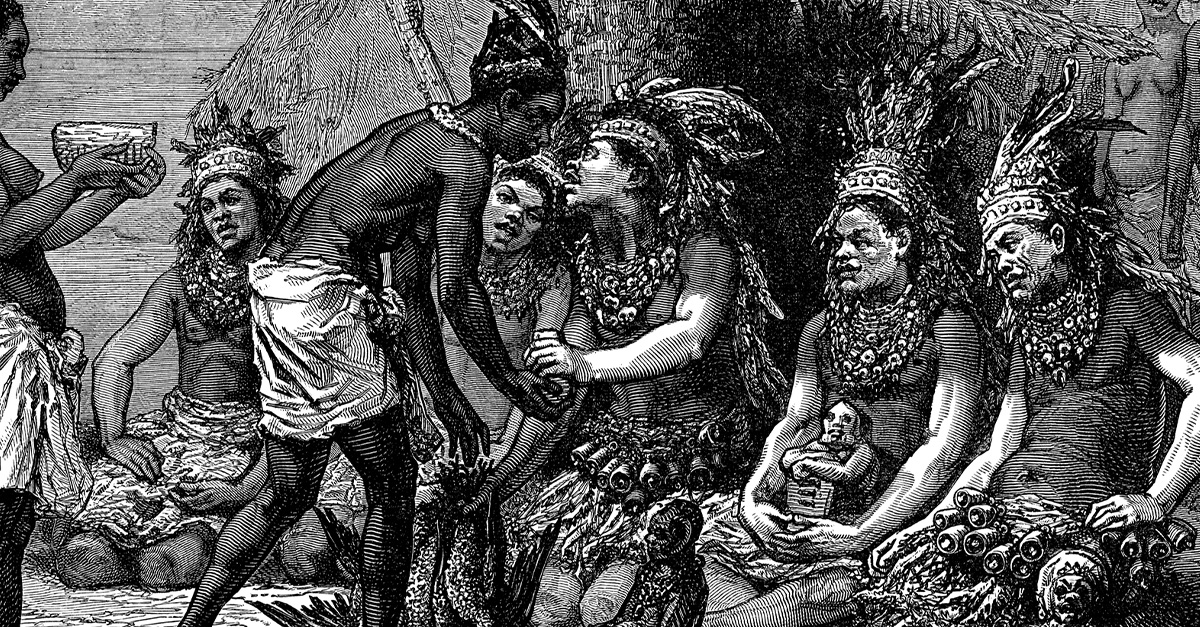The Extraordinary Opulence Of The Ottoman's Home
Located on the very tip of The Golden Horn, a part of the sea where the Bosphorus Strait meets the Sea of Marmara, there lies a centuries-old Ottoman palace, built during the peak of the Ottoman Empire, which served as the home of its Sultans, and also as its administrative beating heart. Join us as we explore the palace's history and the secrets within its sacred walls.
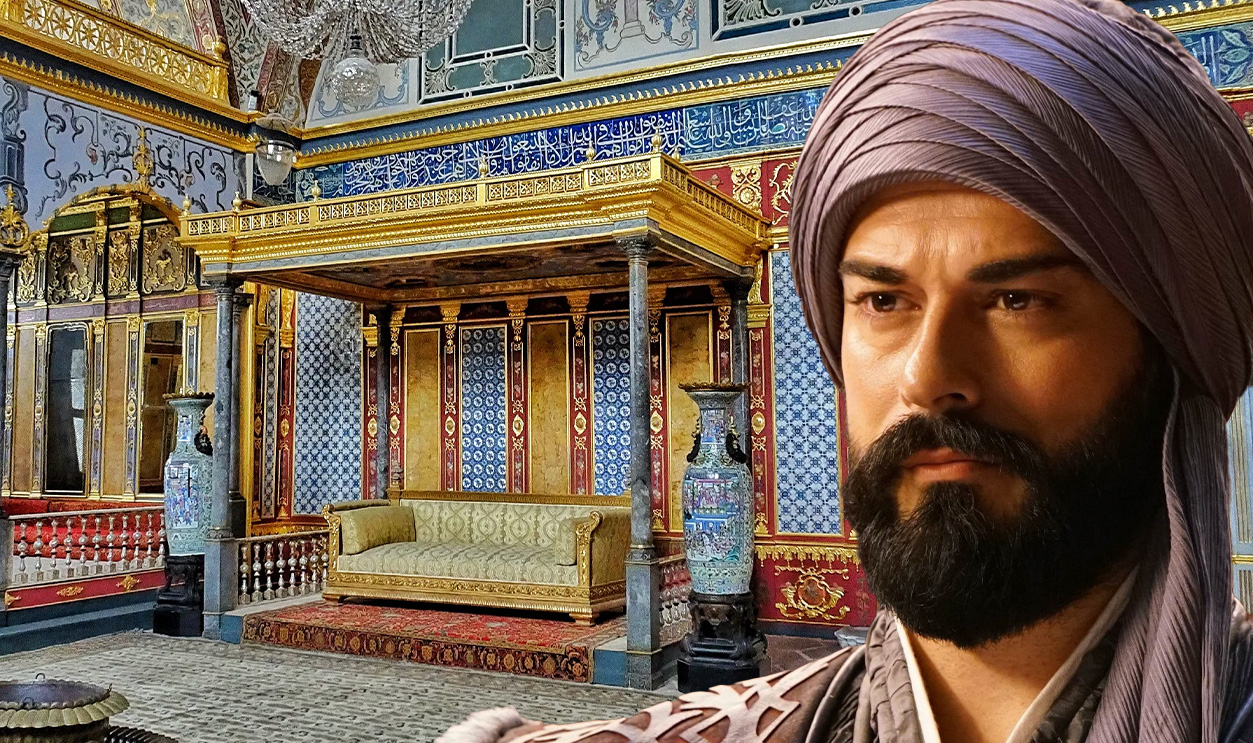
Formerly The Site Of An Acropolis
Given its location high on the hilltop, the site of Topkapi was formerly occupied by an acropolis, built in the ancient Greek city of Byzantium, which was then called Constantinople and is now called Istanbul—Turkey's largest city.
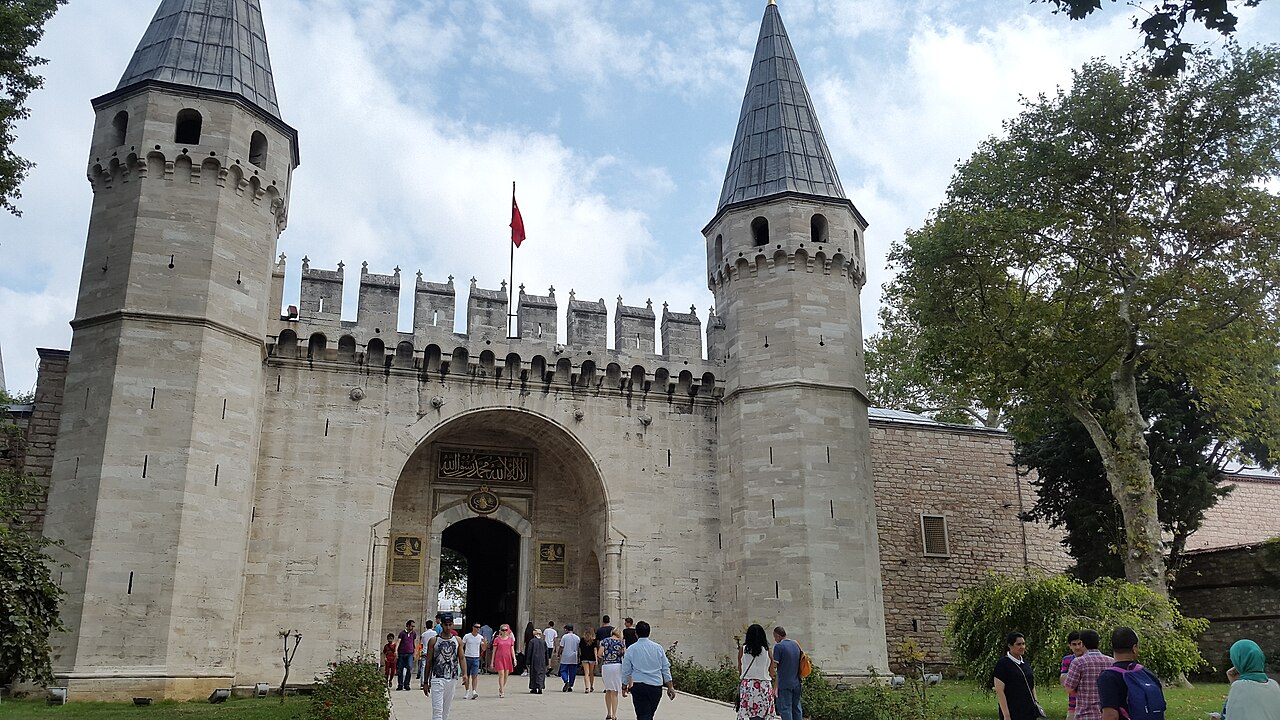 Sahar.Ahmed, CC BY-SA 4.0, Wikimedia Commons
Sahar.Ahmed, CC BY-SA 4.0, Wikimedia Commons
Sultan Mehmed II's Conquest Of Constantinople
Before the building of this spectacular palace, the Ottoman Empire needed to conquer the existing city of Constantinople, which was under Byzantine control at the time. Then, 21-year-old Ottoman Sultan Mehmed II led an army into Constantinople, conquering the city in an event known as the Fall of Constantinople on May 29, 1453.
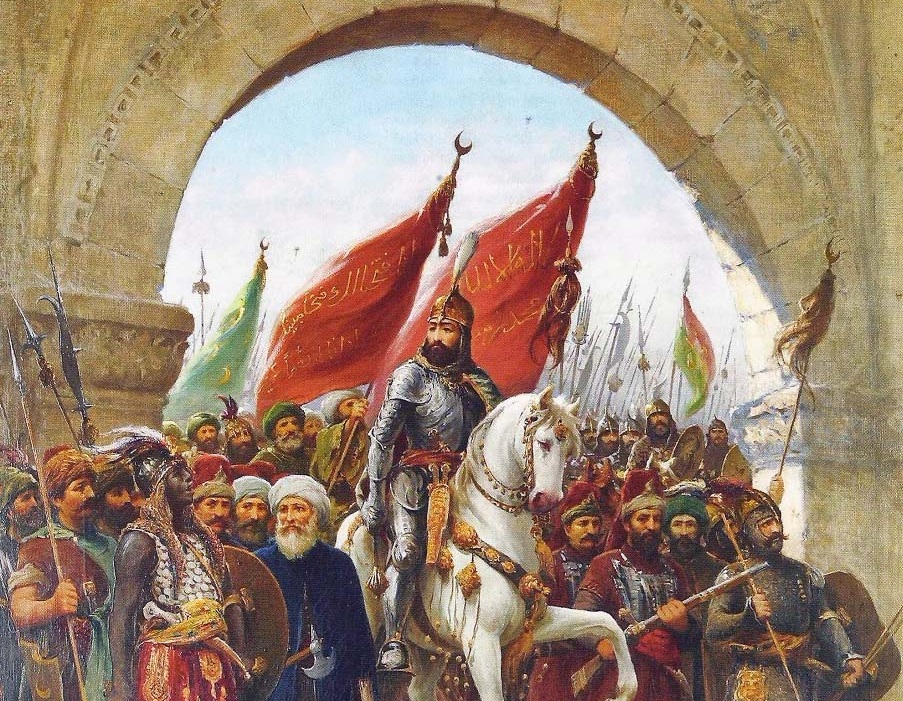 Fausto Zonaro, Wikimedia Commons
Fausto Zonaro, Wikimedia Commons
Construction Of Topkapi Begins
Following the conquest and the sacking of the Great Palace of Constantinople, the Sultan ordered the construction of a new palace, intended to be the center of the Ottoman Empire. According to an Ottoman historian, the Sultan: "took care to summon the very best workmen from everywhere – masons and stonecutters and carpenters ... For he was constructing great edifices which were to be worth seeing and should in every respect vie with the greatest and best of the past".
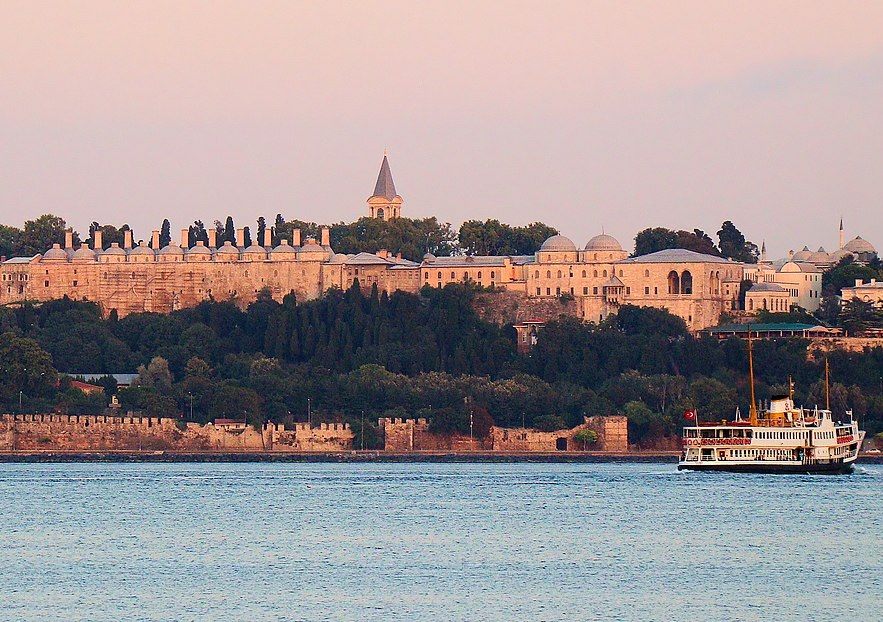 Bjørn Christian Tørrissen, CC BY-SA 3.0, Wikimedia Commons
Bjørn Christian Tørrissen, CC BY-SA 3.0, Wikimedia Commons
Construction Features Of The Topkapi
As was tradition during the Ottoman Empire, Mehmed II ordered his private quarters to be built at the highest point, with the rest of the castle traversing down the promontory toward the sea. Four consecutive courtyards sprang up, surrounded by high walls. Each courtyard served a specific purpose and they were separated by iron gates and other defensive features. The fourth courtyard featured Mehmed's private residence, at the very edge of the land.
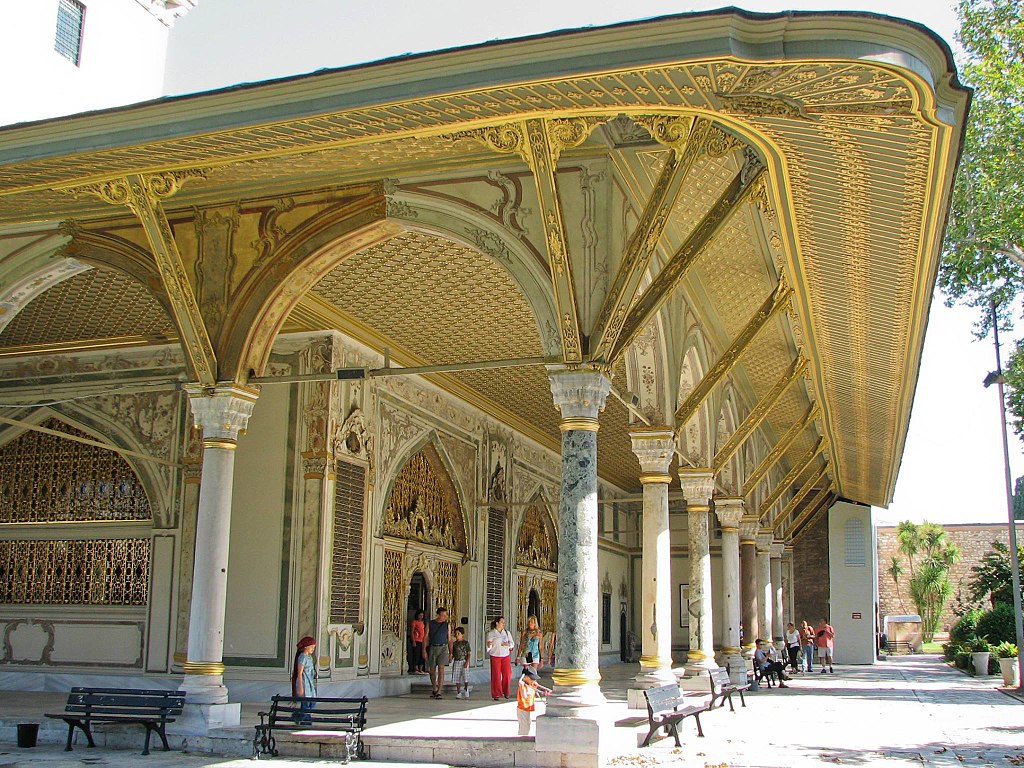 Shoakat hossain, CC BY-SA 4.0, Wikimedia Commons
Shoakat hossain, CC BY-SA 4.0, Wikimedia Commons
The Policy Of Imperial Seclusion
Interestingly, in the inner courtyards, Mehmed and subsequent sultan rulers observed a policy known as "Imperial Seclusion," which meant that anyone in the inner courtyards of the Topkapi was expected to observe complete silence. Not even a whisper could be uttered. This was intended to maintain the Sultan and royal family's privacy. This was part of a broader set of laws known as the Kanunname Code.
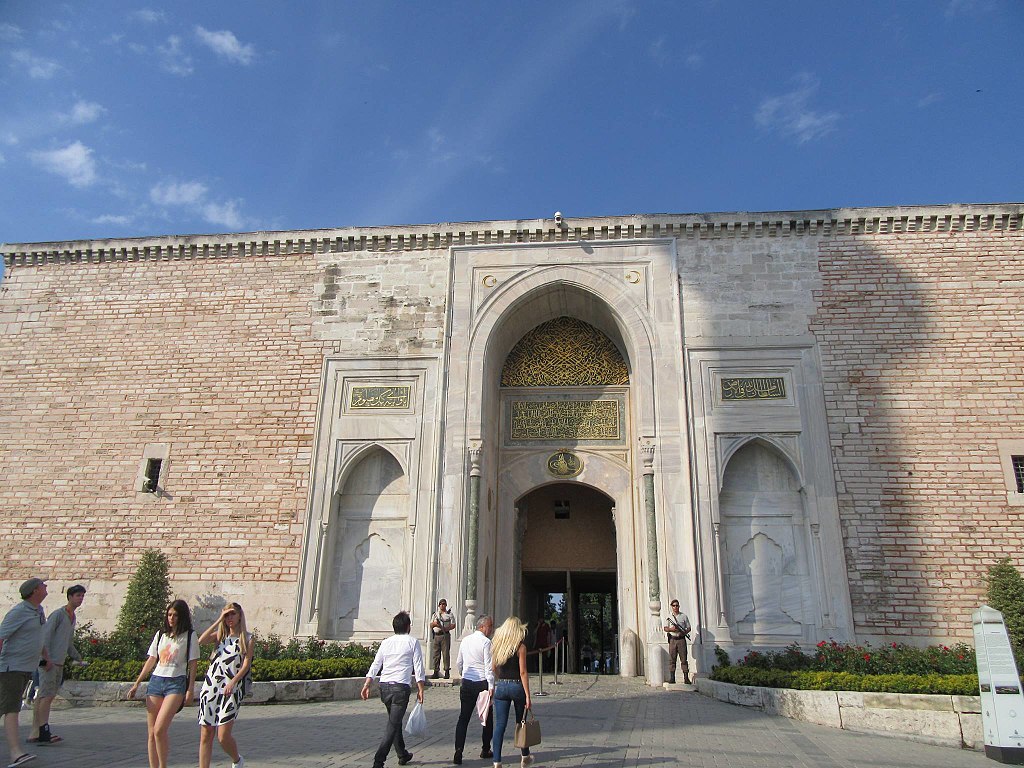 Shoakat hossain, CC BY-SA 4.0, Wikimedia Commons
Shoakat hossain, CC BY-SA 4.0, Wikimedia Commons
Sign Language Instead Of Talking
Because even talking in whispers was banned, the Sultan's aides and servants developed sign language to communicate. Breaching this code of silence could lead to severe punishments.
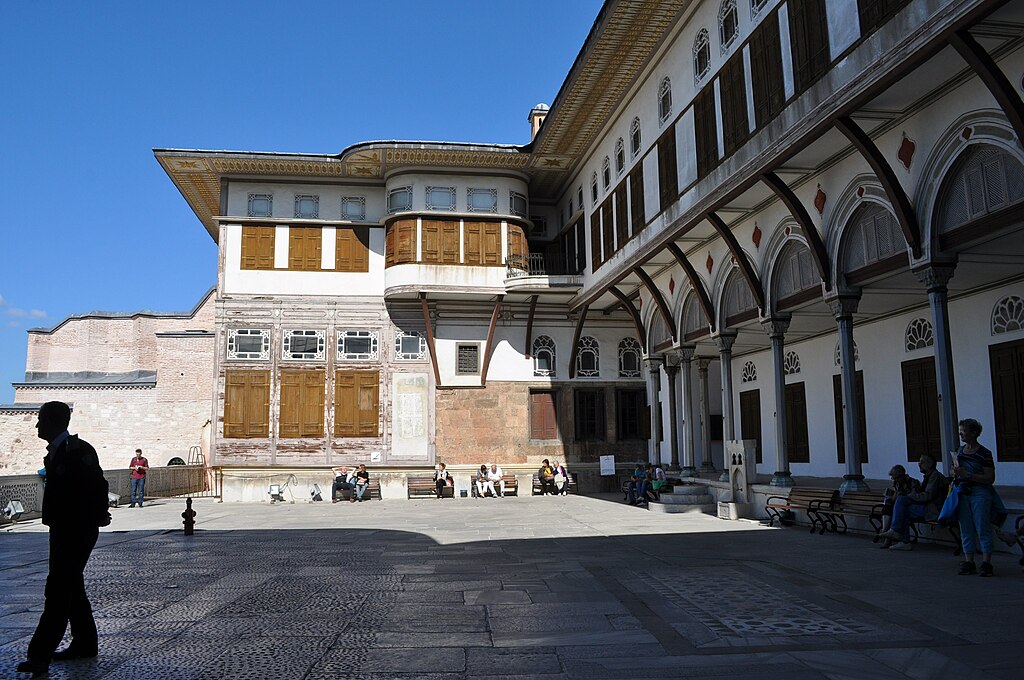 R Flores, CC BY 2.0, Wikimedia Commons
R Flores, CC BY 2.0, Wikimedia Commons
Grilled Windows And Secret Passageways
Such was the emphasis on the privacy of the Sultan, that architects built grilled windows and secret passageways for the Sultan and his family to move about the palace undetected.
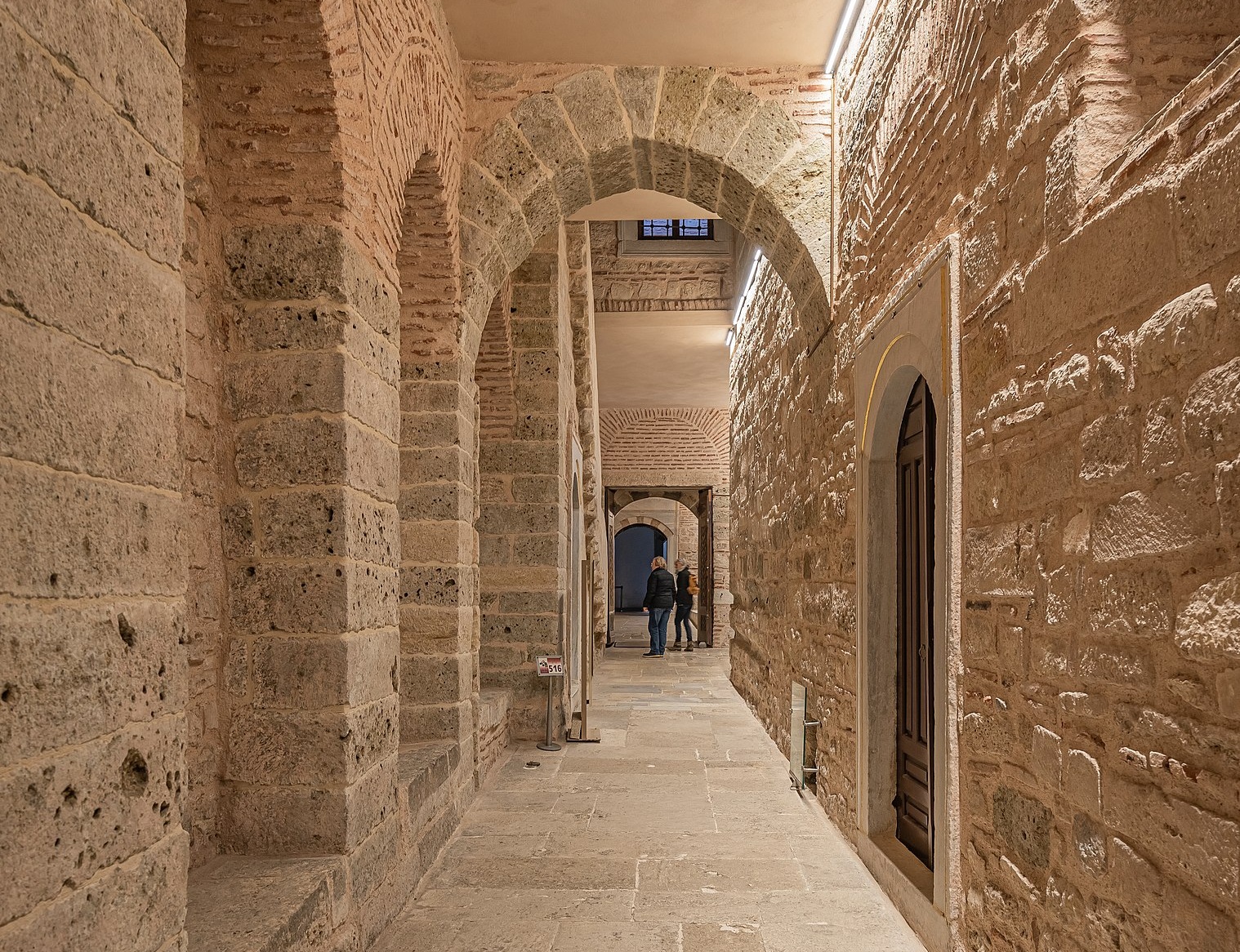 A.Savin, FAL, Wikimedia Commons
A.Savin, FAL, Wikimedia Commons
Expansion After Mehmed's Death
When Mehmed II passed away in 1481, his various successors in the decades to come expanded the palace's overall footprint, enlarging the Harem (women's quarters), baths, and private chambers of the Sultan. Although they built out, almost no Sultan built up—as most of the buildings within the complex don't exceed two stories, save for the defensive towers on the outer walls.
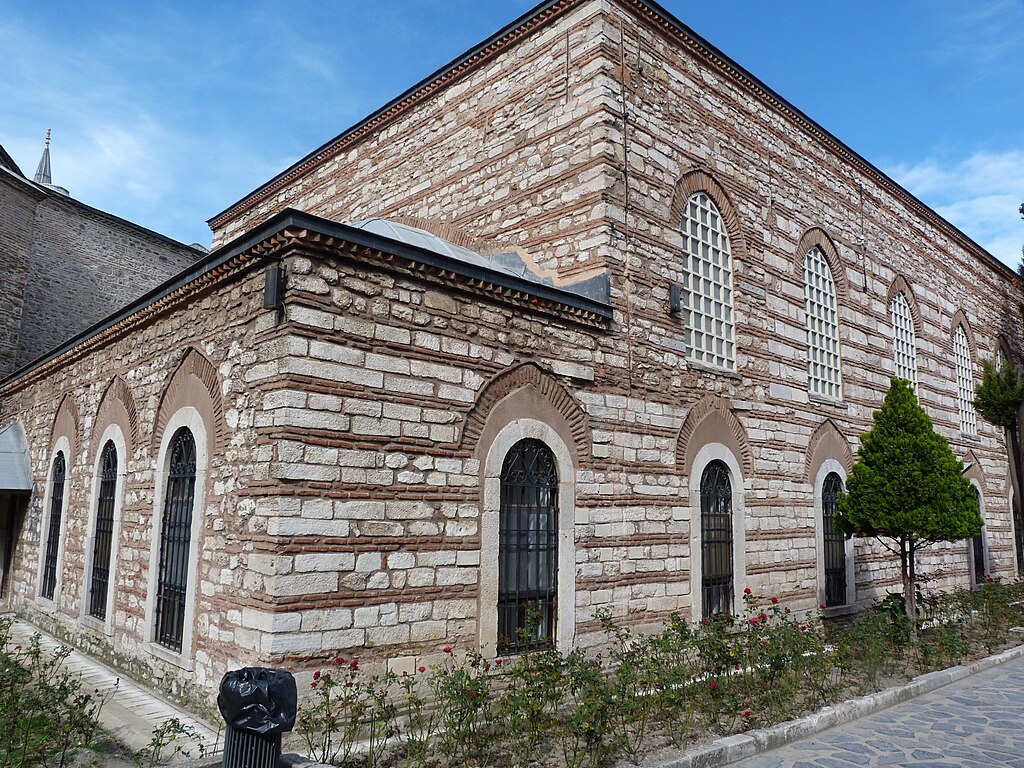 Derzsi Elekes Andor, CC BY-SA 4.0, Wikimedia Commons
Derzsi Elekes Andor, CC BY-SA 4.0, Wikimedia Commons
An Entrance Fit For A Sultan: The Imperial Gate
There are three main gates of Topkapi Palace, with the Imperial Gate being the first you come across when observing the gate from the street. The gate features two doors that open inward and was mostly used by the Sultan upon his return to the palace. Finished in 1478 and inscribed with intricate calligraphy, featuring Mehmed's signature.
 Alexxx1979, CC BY-SA 3.0, Wikimedia Commons
Alexxx1979, CC BY-SA 3.0, Wikimedia Commons
Inside The First Courtyard
Immediately upon entering through the Imperial Gate, you're greeted by rooms that housed the gatekeepers and a room that was destroyed by a large fire in 1866 which previously housed loot from various conquests that had not yet taken to the Sultan's Treasury, located deeper within Topkapi.
 Alexxx1979, CC BY-SA 3.0, Wikimedia Commons
Alexxx1979, CC BY-SA 3.0, Wikimedia Commons
The First Courtyard (Cont'd)
The First Courtyard functioned as a large outdoor park with a few terraces built by the Byzantine Empire, which remain today. Notable buildings include the impressive Imperial Mint (which would have produced the coinage used by the Ottomans) and the Hagia Irene, which was a large Orthodox Church. Today, it's a museum.
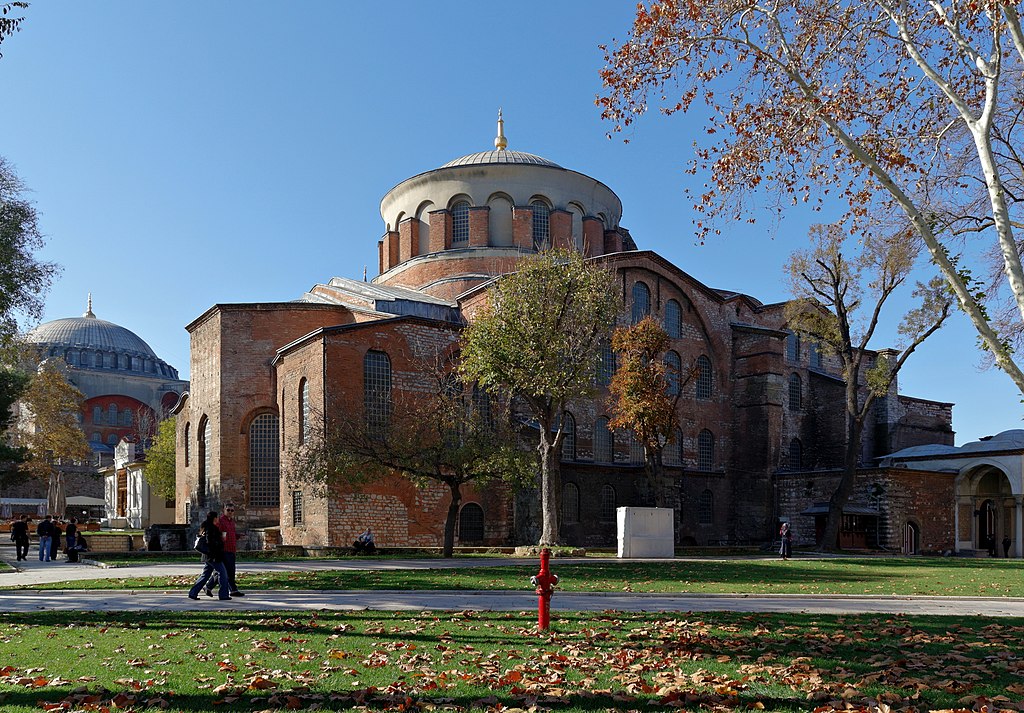 Alexxx1979, CC BY-SA 4.0, Wikimedia Commons
Alexxx1979, CC BY-SA 4.0, Wikimedia Commons
The Court Of The Janissaries
Janissaries were members of the Sultan's elite infantry units, tasked with guarding the outer reaches of the imperial palace. They would often line the pathway that led through the First Courtyard, dressed in their best garb, along with other court officials. Visitors would follow this path through the courtyard past the vigilant Janissaries to the Gate Of Salutation and the Second Courtyard.
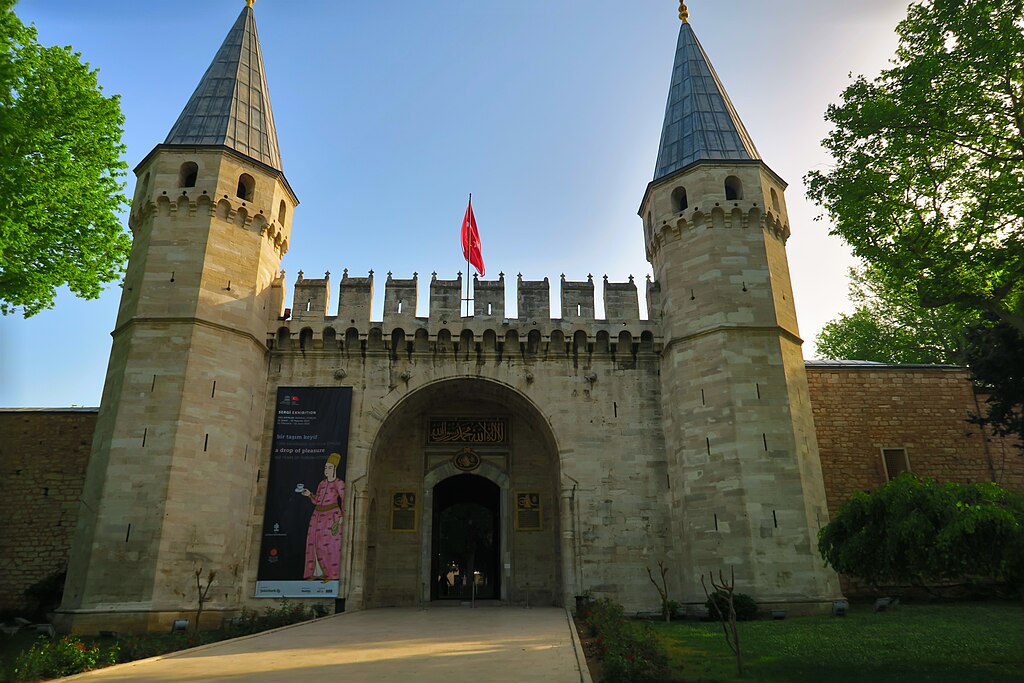 Mattias Hill, CC BY-SA 4.0, Wikimedia Commons
Mattias Hill, CC BY-SA 4.0, Wikimedia Commons
The Gate Of Salutation
The Gate of Salutation was adorned with inscriptions of Mehmed II and various inscriptions from the Qur'an. The Gate of Salutation was also the point at which the code of silence was to be observed and was the place where nobody but the Sultan and his family could ride on horseback. This tradition was adopted from the Byzantines.
A Grisly Site Just Outside The Second Courtyard
Before you enter the Second Courtyard and observe the silent code, there once was a now-destroyed fountain called "Executioner's Fountain". Reportedly, this is where the Sultan's executioner washed his sword after carrying out the Sultan's gruesome orders.
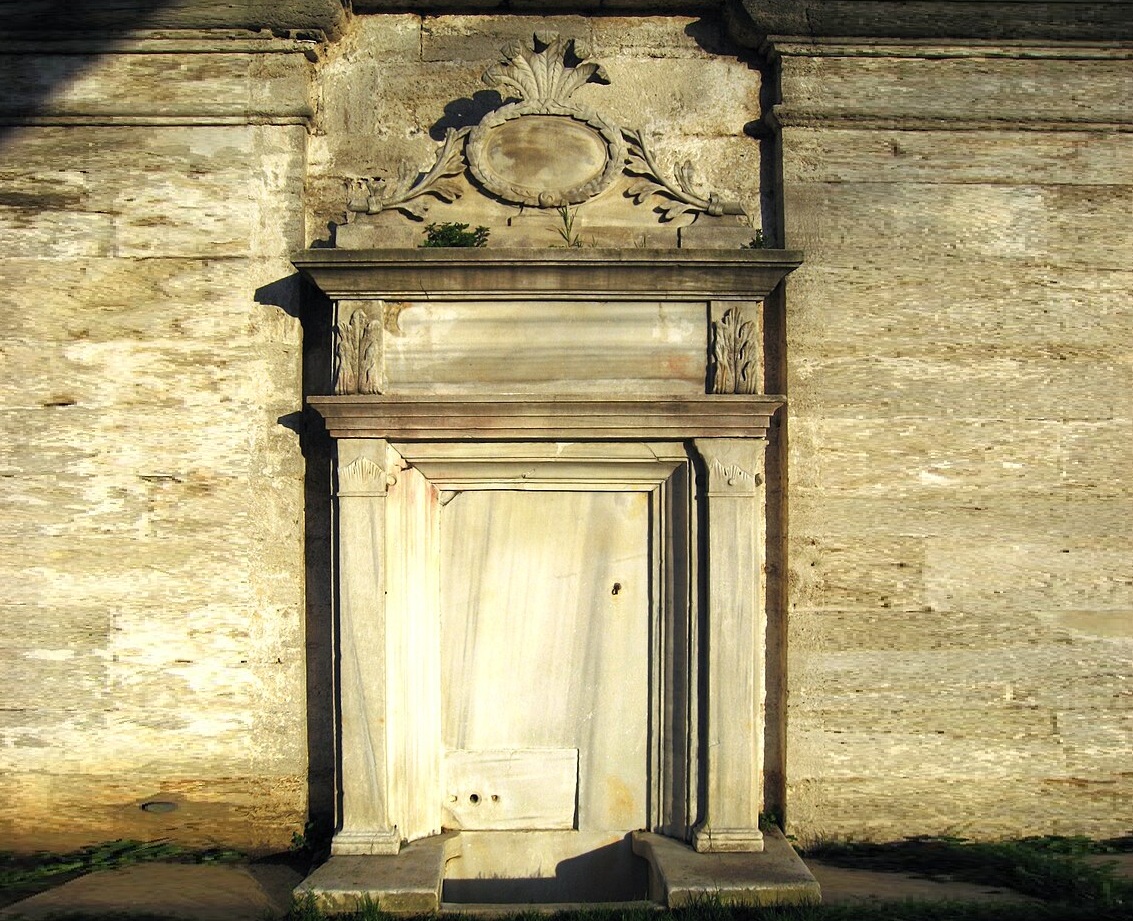 Gryffindor, CC BY-SA 4.0, Wikimedia Commons
Gryffindor, CC BY-SA 4.0, Wikimedia Commons
The Second Courtyard: A Place For Courtiers
Despite observing this code of silence, the Second Courtyard was a place where the Sultan would entertain guests and courtiers, seated on a gold-plated throne. He would have been surrounded by domesticated peacocks and gazelles that resided within the Imperial Palace.
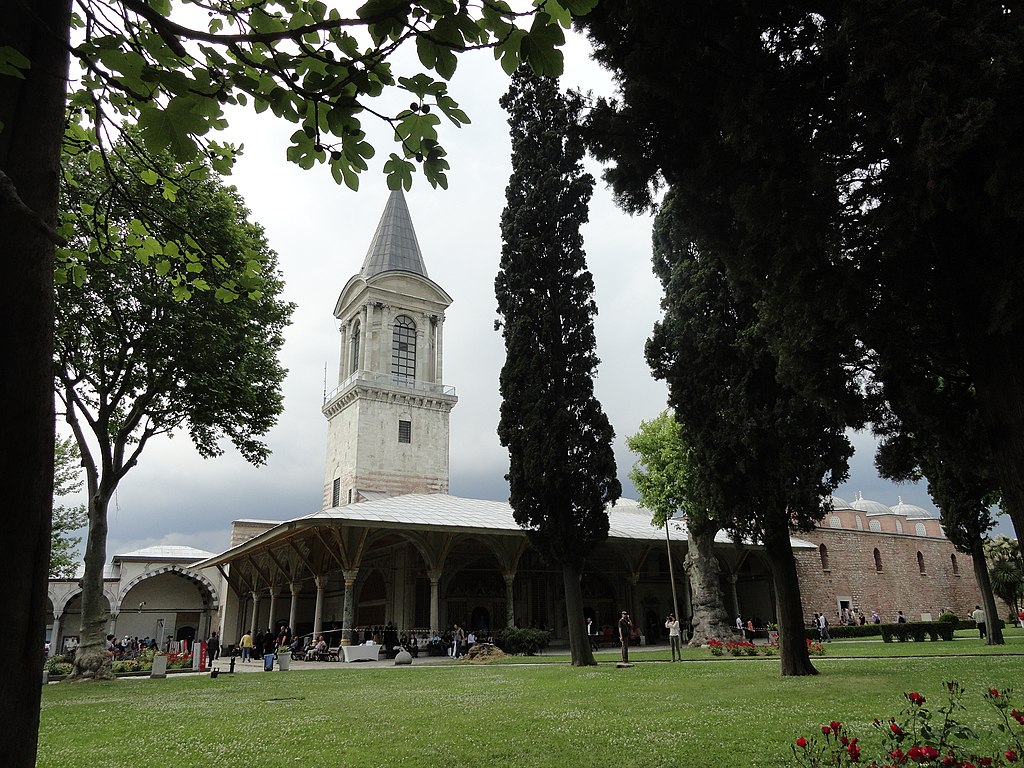 l0da_ralta, CC BY 2.0, Wikimedia Commons
l0da_ralta, CC BY 2.0, Wikimedia Commons
The Imperial Stables
Interestingly, Sultans Mehmed and Suleyman built and expanded their Imperial Stables, providing a home for the Sultan's horses and the horses of his Imperial Guard. The Sultan's horse would likely have been a thoroughbred Arabian horse, among the strongest, fastest, and most even-tempered horses in the world.
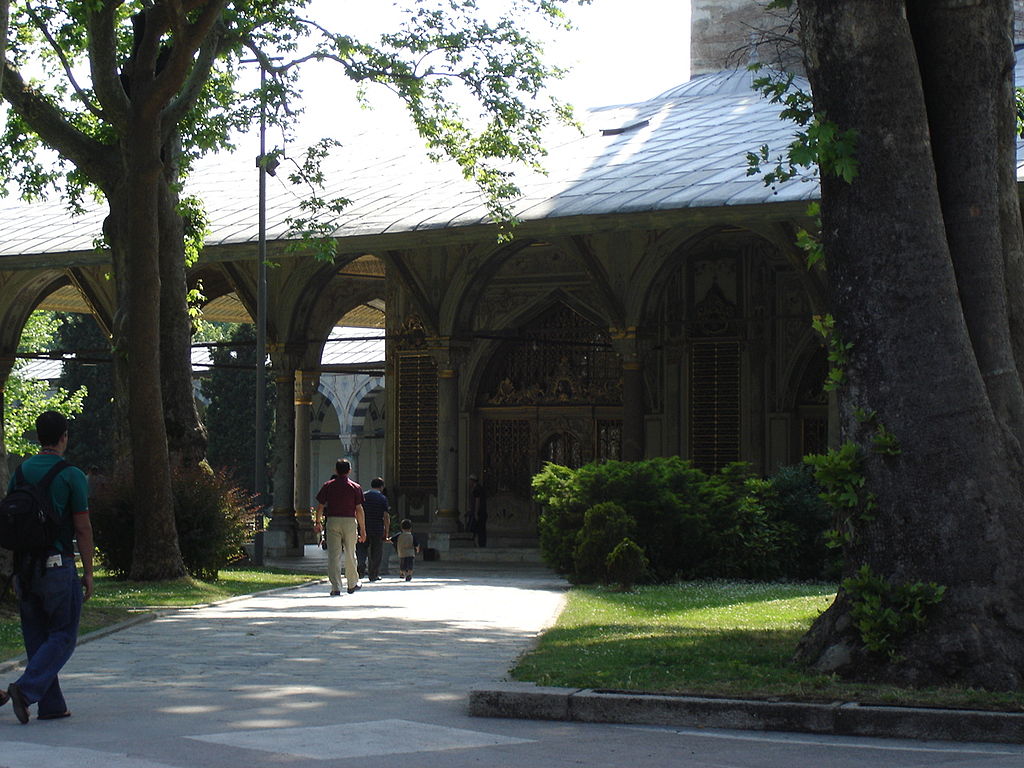 Giovanni Dall'OrtoG.dallorto, Wikimedia Commons
Giovanni Dall'OrtoG.dallorto, Wikimedia Commons
The Imperial Council Chambers
One of the most ornate parts of the palace, outside of the Sultan's royal residence in the Fourth Courtyard, is the Imperial Council Chambers. Built using marble pillars with a stunning white and green wood ceiling, it's decorated with incredible golden inscriptions.
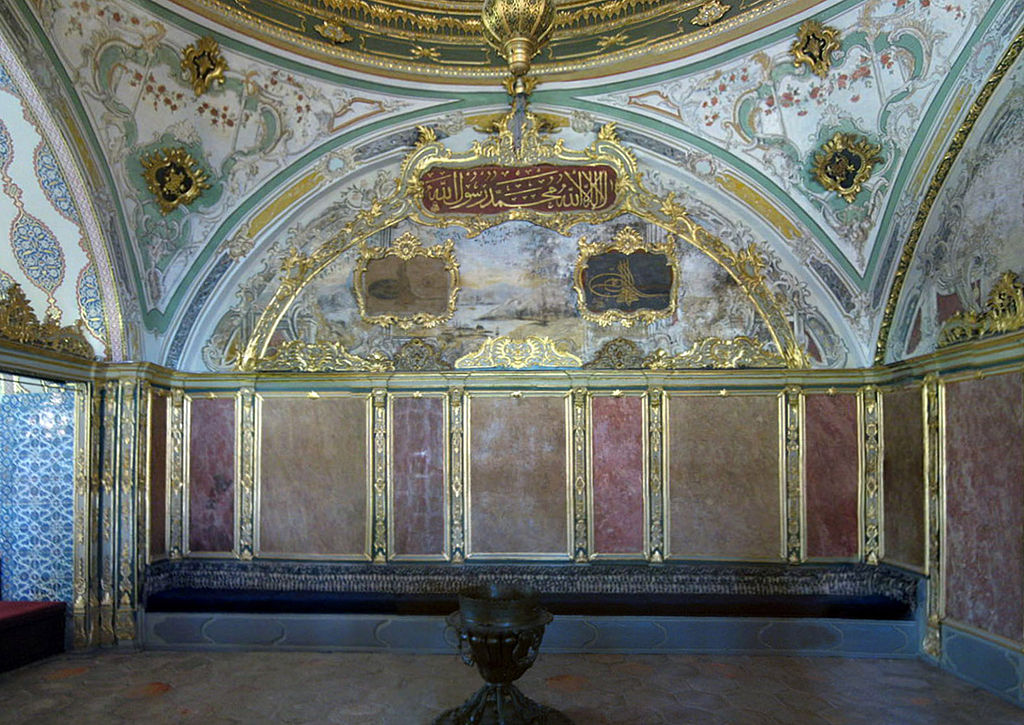 User:Gryffindor, CC BY-SA 3.0, Wikimedia Commons
User:Gryffindor, CC BY-SA 3.0, Wikimedia Commons
The Sultan Was Always Watching... Or Was He?
The chambers consisted of three domed rooms, one containing the main consular deliberation room, along with a frosted glass dividing wall that the Sultan could listen through, without others knowing he was even there.
The Highest Structure In The Palace
As mentioned, most of the palace's structures were two stories tall or less, but the Tower Of Justice was the palace's tallest structure, built to give the impression that the Sultan's overwatch over Istanbul was eternal.
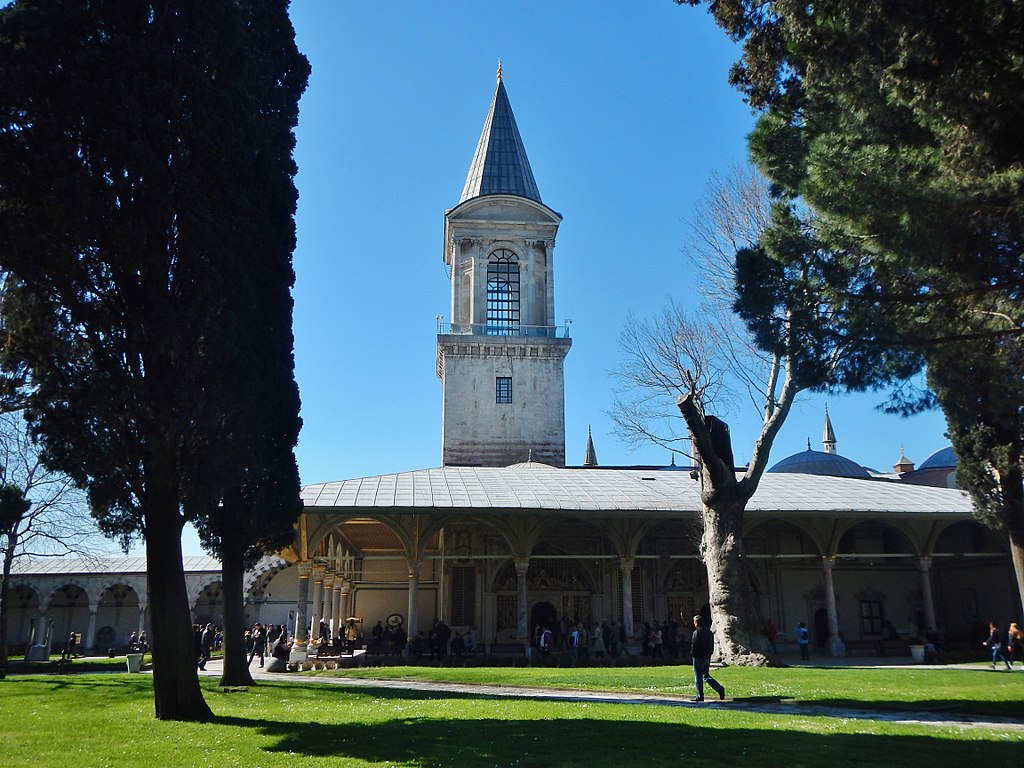 qwesy qwesy, CC BY 3.0, Wikimedia Commons
qwesy qwesy, CC BY 3.0, Wikimedia Commons
The Grand Gate Of Felicity
Before you enter the Third Courtyard, which was the first of two innermost sanctums within the Four Courtyards, you must pass through the Gate of Felicity. It has two pillars supporting a dome, representing the presence of the Sultan in the palace. Nobody could pass through the gate without the permission of the Sultan himself. On religious or festive days, the Sultan would sit outside the Gate of Felicity on his golden throne, while his subjects paid homage.
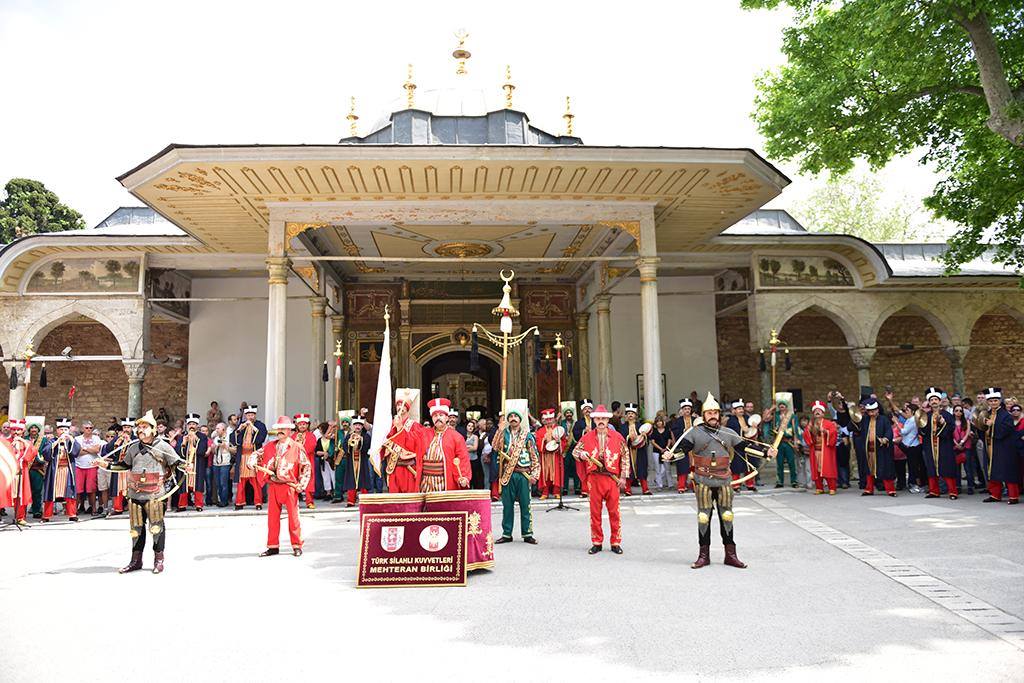 Shoakat hossain, CC BY-SA 4.0, Wikimedia Commons
Shoakat hossain, CC BY-SA 4.0, Wikimedia Commons
The Third Courtyard
The far more intimate Third Courtyard awaited you beyond the Gate of Felicity. This housed a harem where the women of the court slept, and where the Sultan's page boys stayed, along with the Imperial Treasury. Beneath the structure of the Imperial Treasury, a small Byzantine chapel was located during excavations.
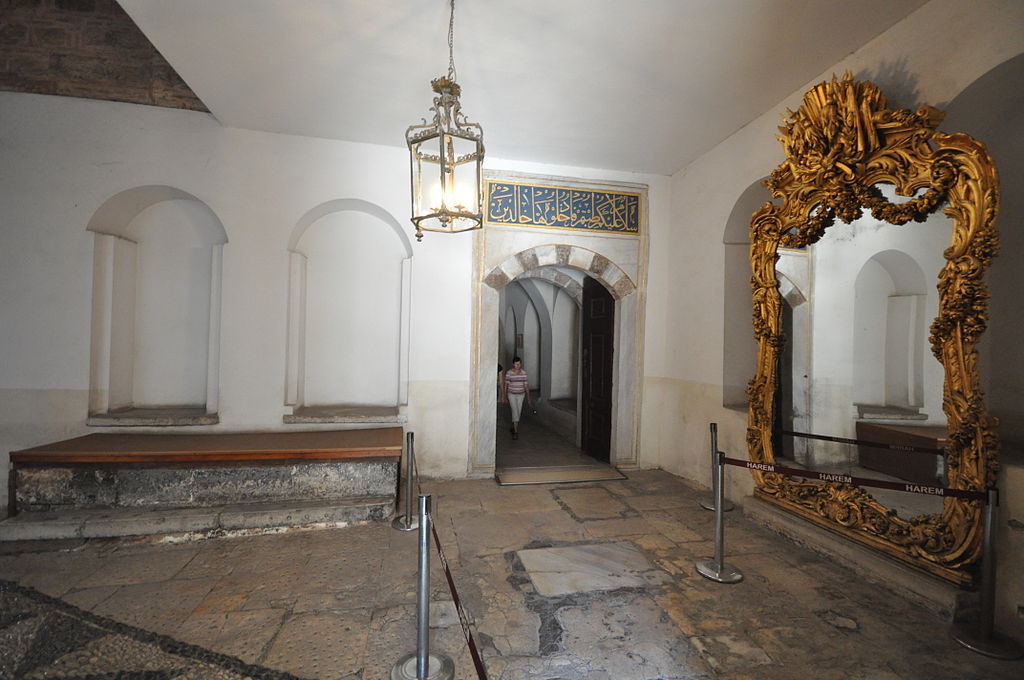 Jorge Láscar from Australia, CC BY 2.0, Wikimedia Commons
Jorge Láscar from Australia, CC BY 2.0, Wikimedia Commons
The Imperial Treasury
Also housed within the Second Courtyard was the Imperial Treasury, which is today a museum, converted in 1928. It houses an impressive collection of the Sultan's armor and armaments, including swords, axes, and helmets. It also includes examples of the Sultan's gold haul from various conquests.
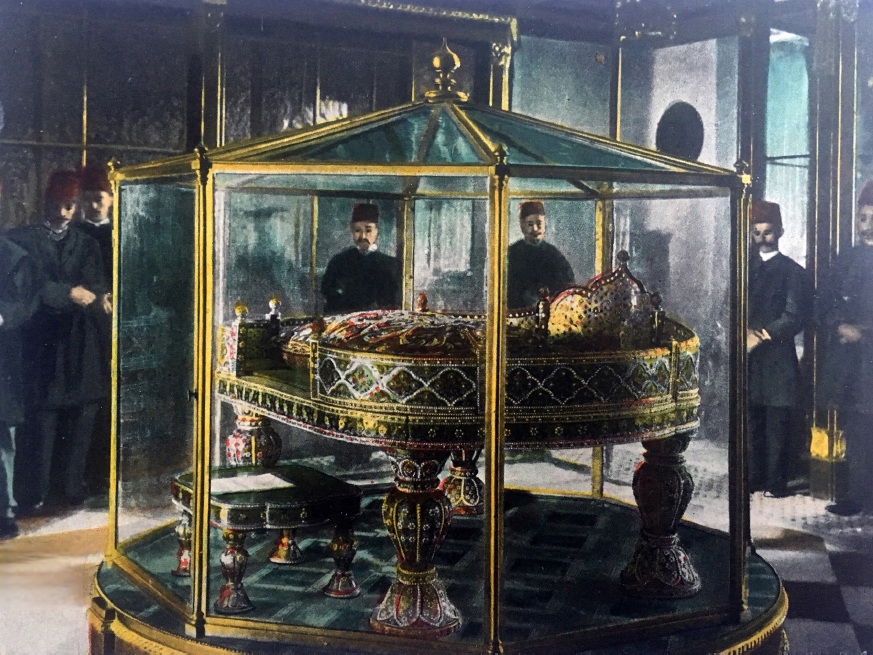 Unknown Author, Wikimedia Commons
Unknown Author, Wikimedia Commons
Other Features Of The Imperial Treasury
The stunning Imperial Treasury is comprised of four rooms, with the third and fourth rooms being among the most interesting. These contain the Topkapi Dagger, a dagger with a golden hilt with three large emeralds, and a golden scabbard encrusted with diamonds and enamel. The dagger was featured in the film Topkapi (1946), wherein a heist of the dagger was depicted. A throne made of walnut also stands in the middle of the room.
The Spoonmaker's Diamond
The most eye-catching thing about the fourth room of the Imperial Treasury is the Spoonmaker's Diamond, an 86-carat diamond set in two rows of 49-diamond brilliance, hanging in a glass case on the wall of the Imperial Treasury. The world's fourth-largest diamond, according to legend, was discovered by a vizier who'd bought it from a trader in a market who'd thrown it away, thinking it was worthless.
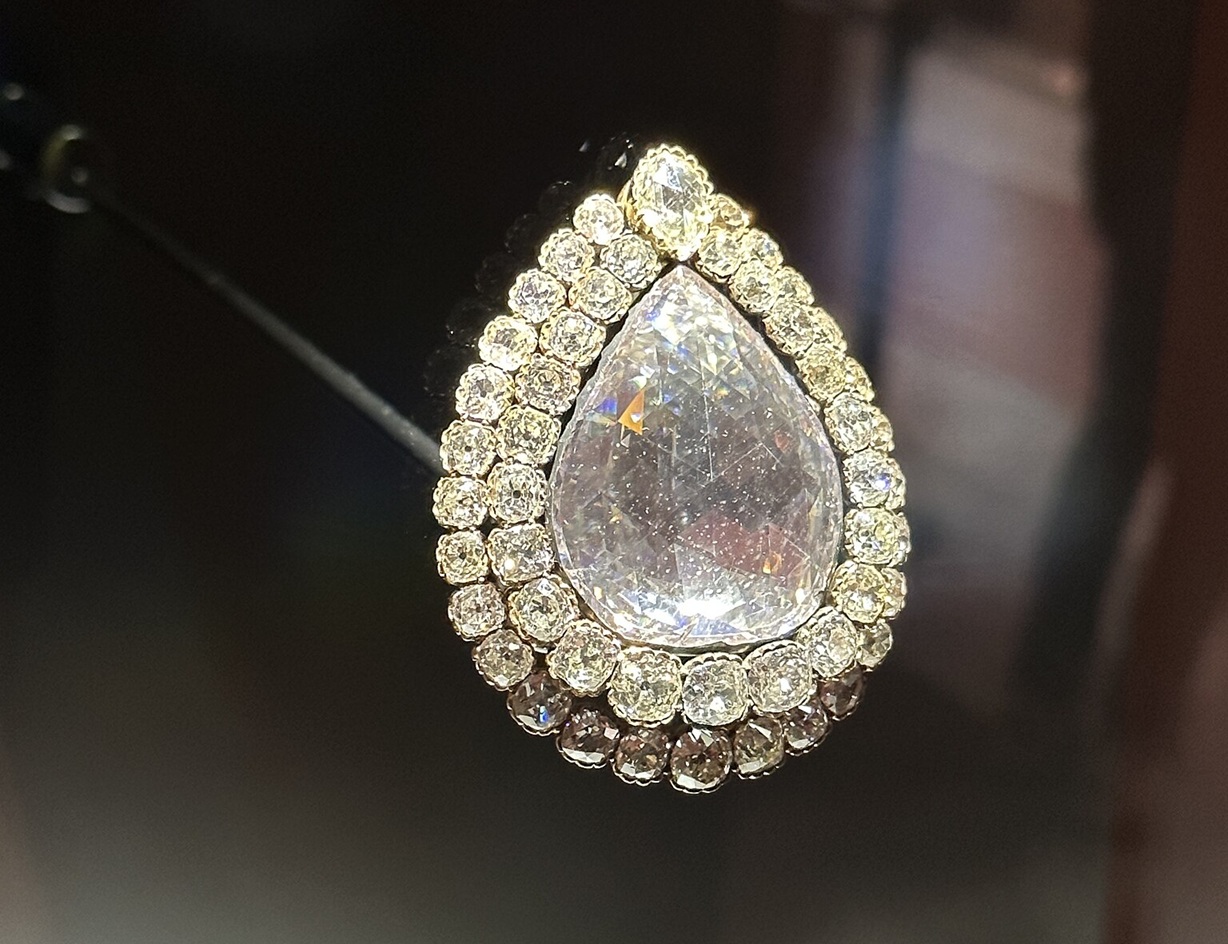 Karakalem, CC BY 4.0, Wikimedia Commons
Karakalem, CC BY 4.0, Wikimedia Commons
The Link To Napoleon Bonaparte's Mother
It's rumored that Napoleon Bonaparte's mother, Letizia Bonaparte, is said to have sold the diamonds to secure her son's release from Elba, where Napoleon was first imprisoned after his failed coup d'etat in the early 19th century.
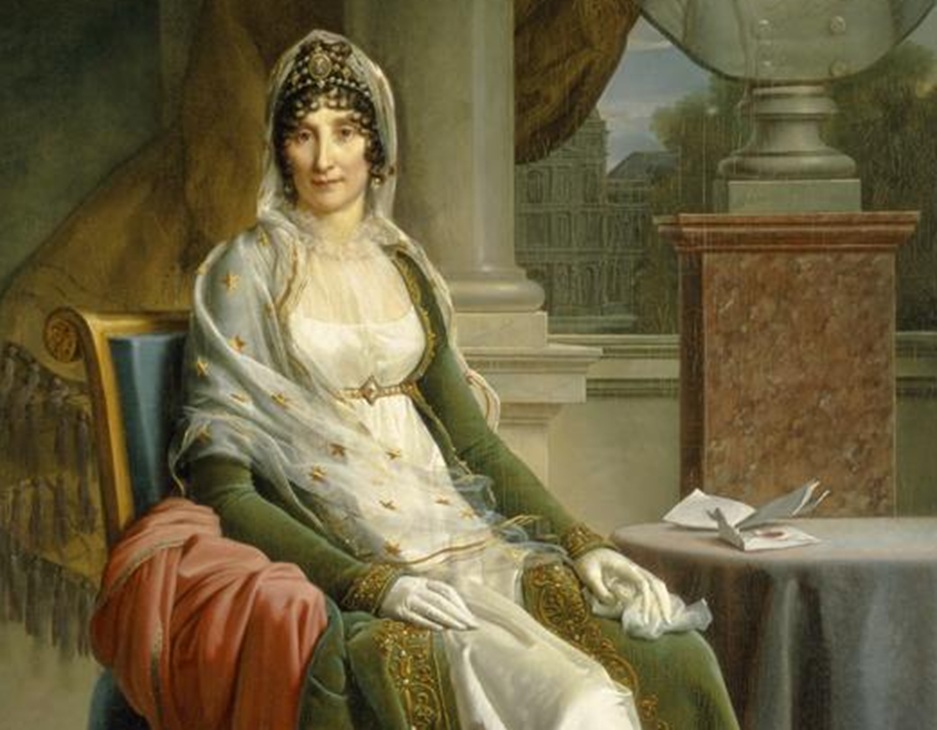 François Gérard, Wikimedia Commons
François Gérard, Wikimedia Commons
The Miniature And Portrait Gallery & The Piri Reis Map
Also inside this Third Courtyard is a miniature and portrait gallery, which used to house the Sultan's pages. Today, it houses the Piri Reis map—the world's first map—a priceless map of the world in 1513. It also includes 27 replica portraits of various Sultans, as the original paintings are too delicate to be shown to the public.
 Yair Haklai, CC BY-SA 4.0, Wikimedia Commons
Yair Haklai, CC BY-SA 4.0, Wikimedia Commons
Into The Enderûn Library
A marble exterior greets you upon entering the Enderûn Library, which contains some 3,500 manuscripts of books on theology, Islamic law, and scholarly works, all in Arabic, Persian, or Ottoman Turkish. It was built in 1789 and only used by officials of the royal court. Among the most important works is a copy of the Qur'an from the 7th century, known as the Topkapi manuscript.
The Largest Mosque In The Palace
Inside the Third Courtyard is the Mosque of the Ağas, where the Sultan would come to pray. It also houses a collection of 13,500 books that were collected by the Ottomans. There is a diagonal line in the mosque, allowing those in prayer to face Mecca.
 Imhotep tep, Wikimedia Commons
Imhotep tep, Wikimedia Commons
The Chamber Of The Sacred Relics
The private chambers of the Sultan house a collection of the most sacred relics of the Muslim world. Including: a cloak worn by Mohammed, two swords, a bow, a hair from his beard, and a tooth that belonged to him. Also included in the collection are an autographed letter. Other relics are four swords from the first four Caliphs and the Staff of Moses, the Turban of Joseph, and a carpet that belonged to Mohammed's daughter.
Not Even The Sultan Was Allowed Entry
The Chamber of Sacred Relics dates back to 1517, when the Ottomans conquered the Abbasid Caliphate. A long-standing rule after the Ottoman's established power over the area was that not even the Sultan himself was permitted entry into the room of relics, except for on the 15th day of Ramadan. Today, visitors can see the relics of Islamic history, albeit in very low light to protect them from sun damage.
The Harem Of The Palace
The largest harem of the palace can be found just prior to the Third Courtyard, which contained residences of the Queen Mother, the Sultan's wife and concubines, and a number of other courtyards, including the Courtyard of the Favorites and its sinister pecking order.
The Courtyard Of The Favorites
The Courtyard of the Favorites was where the Sultan's "favorite" concubine stayed. As part of the pecking order of the concubines within the palace's harem, whenever a Sultan's concubine became pregnant, she would assume the role of the Sultan's consort.
![]() Josep Renalias, CC BY-SA 2.5, Wikimedia Commons
Josep Renalias, CC BY-SA 2.5, Wikimedia Commons
The Golden Road
While not paved with gold, legend has it that this discreet passageway that the Sultan used to pass between the Imperial Terrace, the Harem, and the Privy Chamber was adorned with gold coins that the Sultan used to throw behind him, for concubines to collect on festival days.
 Bjørn Christian Tørrissen, CC BY-SA 3.0, Wikimedia Commons
Bjørn Christian Tørrissen, CC BY-SA 3.0, Wikimedia Commons
The Fourth And Final Courtyard
The Fourth Courtyard was the innermost sanctum of the Palace of Topkapi, where the Sultan's private quarters could be found, along with those of his immediate family. It included a royal circumcision room, where regal princes were ceremonially circumcised from 1640 onward. It also contained a number of gardens and terraces and rooms with some of the best views of the Bosphorus Strait.
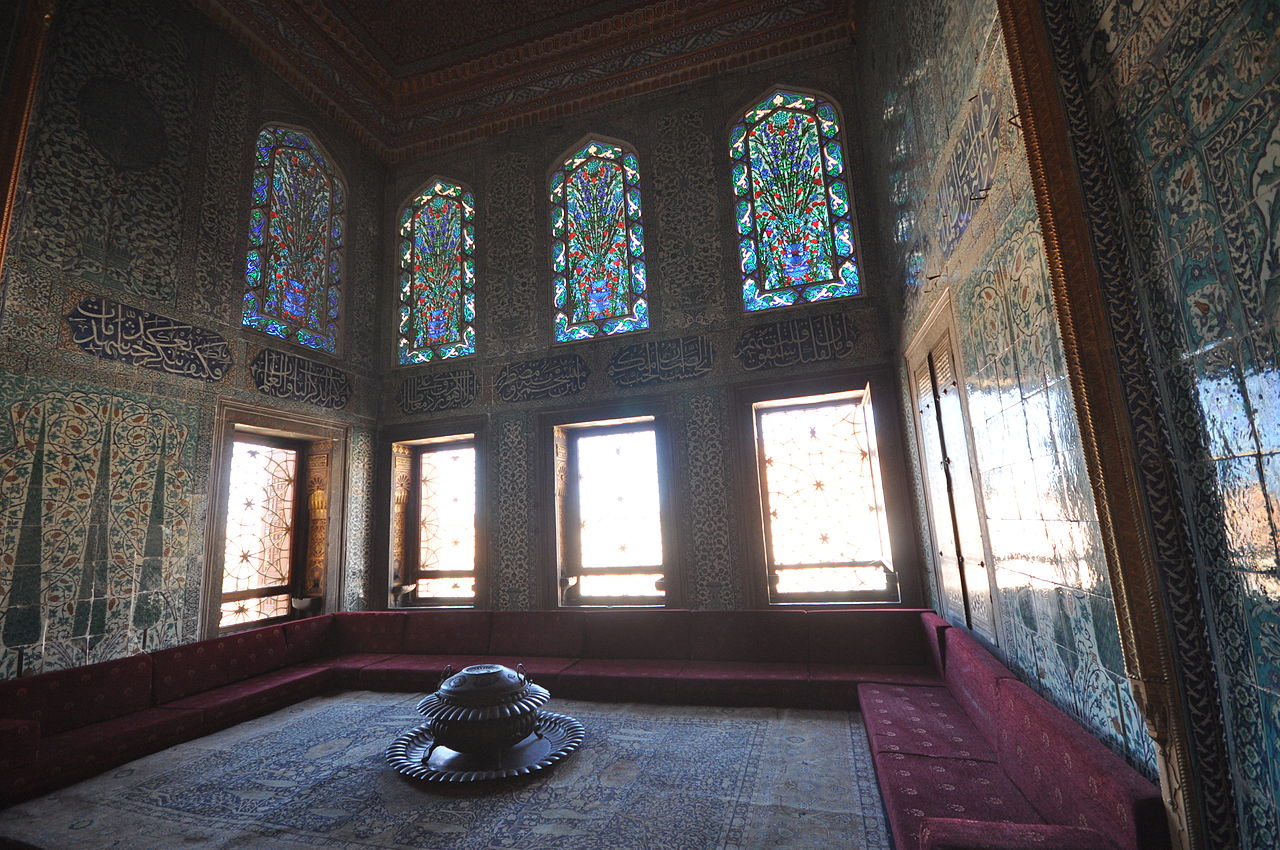 Jorge Láscar, CC BY 2.0, Wikimedia Commons
Jorge Láscar, CC BY 2.0, Wikimedia Commons
The Court Pharmacy, Physician & Tutor's Quarters
Among the many terraces and pavilions were the private quarters of the pharmacy of the Sultan's court, and the private quarters of the Sultan's Physician and Tutor. The Chief Physician often accompanied the Sultan into battle and was responsible for his and his family's health. Today, it houses a museum featuring medical instruments used by the Chief Physicians during the times of the Sultanate.
The Grand Kiosk With A Stunning View
The last addition to the palace was the Grand Kiosk in 1840, added by Sultan Abdül Mecid I, the 31st Sultan of the empire. This kiosk included a stunning, panoramic view of the Bosphorus Strait and the Sea of Marmara, along with a reception room and a resting place. Located next to the Grand Kiosk is a high-end restaurant which has hosted foreign dignitaries including Jackie Kennedy, Queen Elizabeth II, Richard Nixon, and Muhammad Ali.
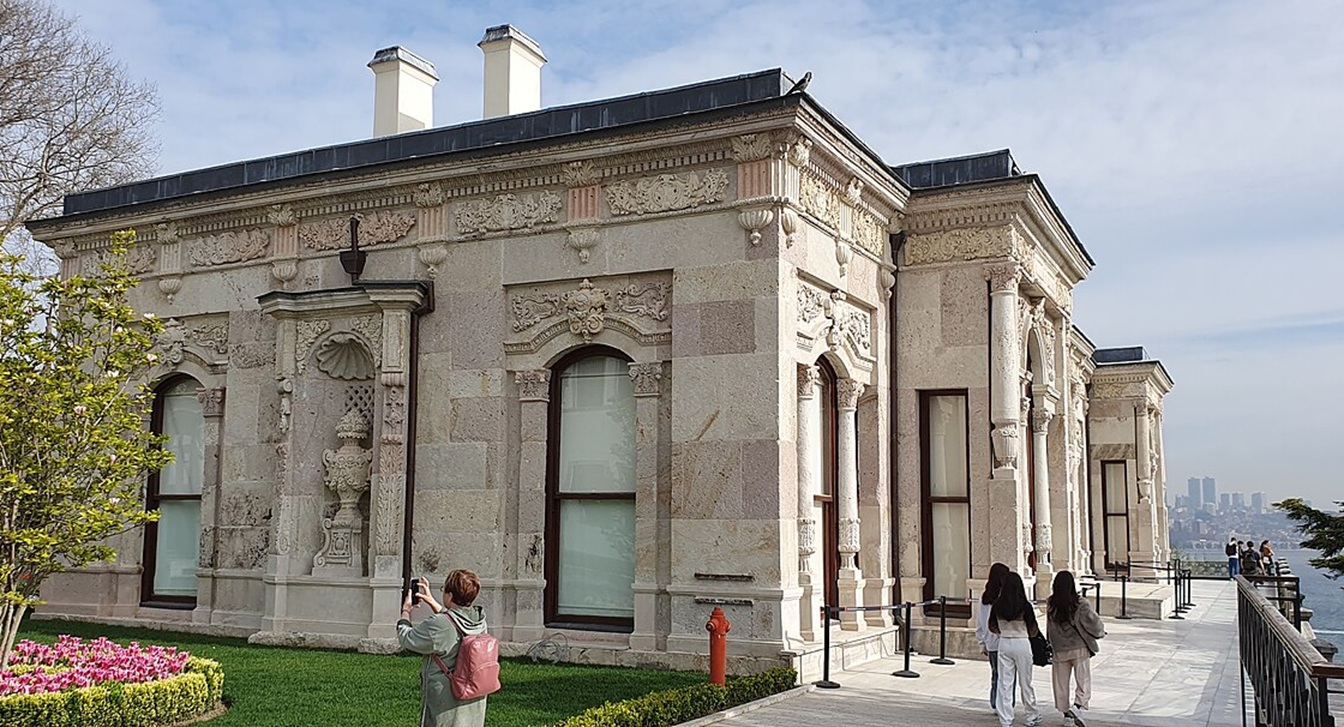 Yair Haklai, CC BY-SA 4.0, Wikimedia Commons
Yair Haklai, CC BY-SA 4.0, Wikimedia Commons
Copies Of The Palace In Antalya, Turkey
Located in Antalya, Turkey, is a gorgeous five-star hotel: the World Of Wonders Resorts & Hotels Topkapi Palace, which contains reproductions of many of the palace rooms, including the Tower of Justice, the Audience Chamber, and the Palace Kitchens.
The Palace Today
Today, the palace is largely a museum, with most of the rooms closed off to tourists. Almost all areas of the palace are kept under armed guard. The palace was recognized by UNESCO in 1985 as a World Heritage Site and is one of the most incredible and important buildings in Turkish history.
You May Also Like:
One Of The Most Remote Tribes In The World
Quiz: Can You Identify These 22 Countries From Around The World?
The World's Most Amazing Man-Made Structures
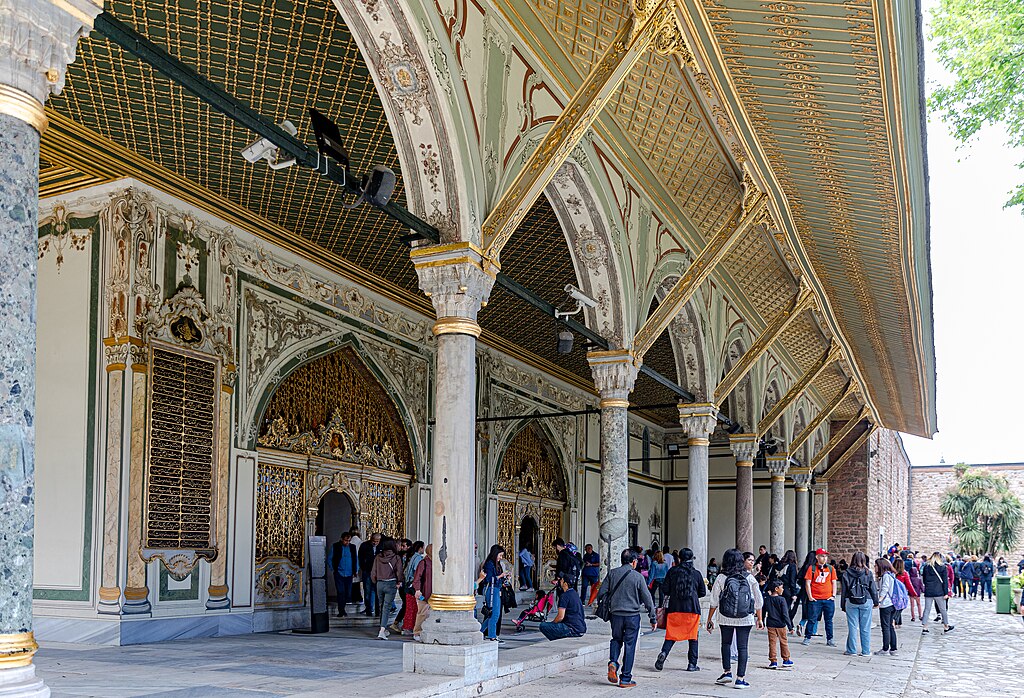 Ninara, CC BY 2.0, Wikimedia Commons
Ninara, CC BY 2.0, Wikimedia Commons
Sources:



